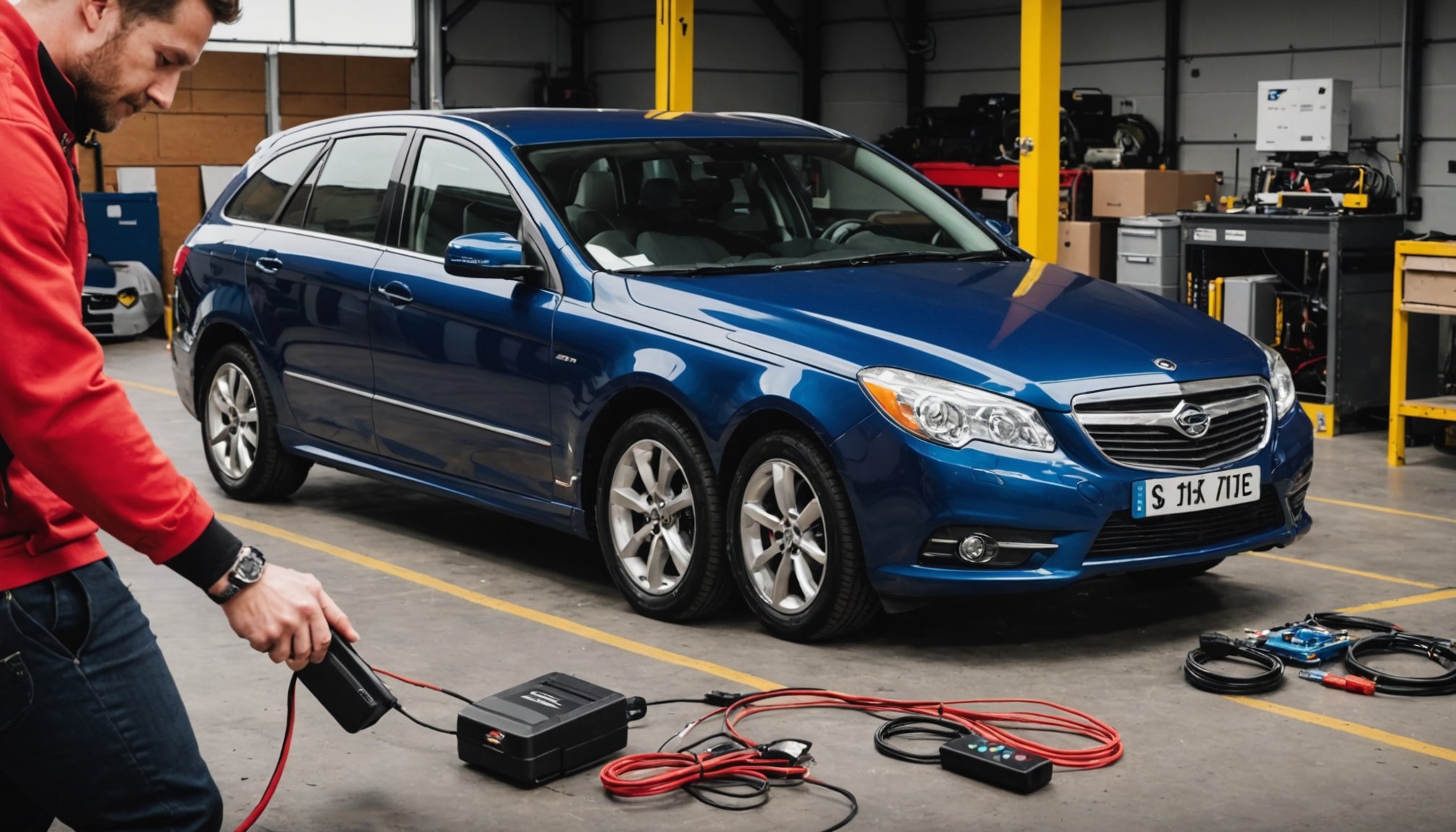Overview of Remote Start Systems
Remote start systems are innovative technologies designed to enable the ignition of a vehicle’s engine from a distance. By using a remote or smartphone app, these systems provide the convenience of warming up or cooling down the car before entering. In the UK, remote start systems are becoming increasingly popular for their numerous advantages, especially during colder months.
Advantages for UK Vehicles
These systems offer significant benefits for UK vehicles. Owners can effortlessly manage their vehicle’s internal climate without stepping outside, leading to improved comfort. Moreover, remote start systems allow for defrosting windows in icy conditions, enhancing visibility and safety.
Also to see : What should I consider when selecting UK vehicle tire care products?
Legal and Regulatory Considerations
It is essential to be aware of legal considerations and regulations surrounding remote start systems in the UK. While these systems are generally allowed, they must comply with UK automotive standards, ensuring they are safe and do not interfere with vehicle operation. Owners should ensure the systems do not encourage idling for extended periods, as this might contravene local emission laws. Checking with insurance providers is advisable to determine how installation might impact coverage.
Tools and Materials Needed for Installation
Navigating the world of installation tools and remote start systems can be daunting. However, understanding the essentials simplifies the process. To start, having a basic toolkit is invaluable, including screwdrivers, wire strippers, multimeters, and electrical tape. These tools facilitate the connections needed between your remote start system and your vehicle.
This might interest you : What are the top five essential UK vehicle products for winter driving safety?
When selecting a remote start kit, compatibility with UK vehicles is crucial. Kits often include crucial components: a controller module, wiring harnesses, and user manuals tailored to UK models. It’s advisable to choose brands that comply with local automotive standards for safety and performance.
Sourcing tools and materials locally ensures they meet UK specifications. Many local automotive shops offer installation tools and kits—validating for UK compliance is wise. For those preferring online shopping, ensuring UK delivery options guarantees timely access to required components.
Installation tools specific to your vehicle may vary slightly, so consulting your vehicle’s manual or seeking professional advice can be beneficial. Preparing thoroughly minimizes installation headaches, setting you up for success in upgrading your car with advanced conveniences.
Preparing Your Vehicle for Installation
Preparing your vehicle is a fundamental step in the installation process of a remote start system. This involves ensuring safety, following UK automotive standards, and making proper adjustments to the vehicle’s existing setup.
Safety Precautions
Adhering to safety guidelines is crucial. Always refer to UK automotive standards when handling electrical systems. Using proper safety equipment and techniques minimizes risks, ensuring the installation process is smooth and incident-free.
Disconnecting the Battery
One of the essential steps before installation is to disconnect the battery. This prevents potential short circuits and safeguards electronic components. Carefully disconnect the negative terminal first, ensuring the vehicle’s power system is fully deactivated.
Accessing the Vehicle’s Wiring Harness
Locating and accessing the vehicle’s wiring harness is pivotal. Begin by consulting your vehicle’s manual to identify the harness location. Use appropriate tools to access the wiring area, which is often behind panels or under the dashboard. Ensure you are prepared with your installation tools for efficient access and to facilitate connections. Following these steps meticulously aligns with safety and installation requirements, ensuring a seamless integration of your remote start system.
Step-by-Step Installation Instructions
When installing a remote start system, following a systematic approach is key. First, ensure that your vehicle is parked on a level surface and that the handbrake is engaged. Use installation tools such as screwdrivers and wire strippers for precision. Begin by removing panels to expose the wiring harness. Identifying the correct wires for your specific UK vehicle model is crucial.
Wiring Connections
Locate the ignition, starter, and accessory wires. For a precise connection, refer to your vehicle’s wiring diagram, often found in the manual. This ensures integration of the remote start system with existing vehicle features. Connectors provided in remote start kits simplify this task. Securely fasten all connections to prevent disconnections.
Integrating the System
Once wiring is complete, attach the controller module. Ensure it’s mounted away from heat sources. Test the system by triggering the remote to start your car. Verify that additional features like defrost and climate control integrate seamlessly.
Completing these steps consolidates the installation of your remote start system. Adjustments specific to some UK models may be necessary, so consult with a professional if issues arise. Proper installation instructions are paramount to enjoying the convenience and efficiency remote start systems offer.
Troubleshooting Installation Issues
Understanding common troubleshooting techniques can save time and frustration when setting up your remote start system. If the system fails to activate, verify that all connections are secure. Loose wires or improperly seated components often cause malfunctions. Ensure you follow the vehicle-specific installation instructions, as wiring might vary across models. Consult the user manual for designated wire placements.
One frequent issue involves the remote’s signal failure. Check the batteries of the remote control first; a simple replacement might resolve connectivity problems. If the system still doesn’t respond, review the antenna placement. It should be away from metal objects that could interfere with the signal.
In cases where the vehicle starts but dies shortly after, the problem may lie with the tachometer or engine sensing settings. Adjust these settings according to the product manual to ensure compatibility with your car’s electrical system.
If the installation problem persists or if anomalies appear specific to certain UK models, contacting a professional can provide a solution. Some vehicles might require additional modules or adapters, and expert advice ensures these components are correctly installed. Following these troubleshooting steps can help achieve a seamless remote start experience.
FAQ Section
Understanding the nuances of remote start systems can be challenging. Here, we address Remote Start FAQs and provide insights into common queries.
Common Concerns
What are the main benefits? Remote start systems offer convenience in temperature regulation and defrosting capabilities before entry, which is particularly advantageous in the UK’s climate. They allow hands-free climate management and enhance overall safety by pre-heating and defrosting.
Legality and Insurance Implications
Are remote start systems legal in the UK? Yes, but they must comply with the UK’s stringent automotive standards. Systems should not excessively idle the engine, as emissions laws prohibit prolonged idling. Will installing a remote start system affect my car insurance? Potentially. It’s advisable to contact your insurance provider to understand any impacts on coverage. Some providers might offer a discount for enhanced security.
Maintenance After Installation
How should I maintain the system post-installation? Regular testing of the remote start functionality ensures its reliability. It’s crucial to follow maintenance schedules for both the remote and vehicle systems. Replacing batteries in remotes and ensuring all connections remain secure will retain optimal performance.
Recommended Products and Services
Navigating the realm of remote start products can be daunting. However, identifying high-quality solutions ensures a seamless experience for UK vehicle owners. Several top-rated remote start kits, compatible with UK vehicles, offer reliability and ease of use. Notable options include user-friendly kits that comply with UK automotive standards, ensuring safety and optimal functionality.
Choosing the right installation service is equally important. While many opt for a do-it-yourself approach, professional installation provides peace of mind. Professional services guarantee proper adherence to installation instructions, mitigating the risk of errors. Additionally, they can ensure the setup integrates with the vehicle’s existing systems without issues.
For those considering DIY, it’s vital to understand the costs involved compared to professional services. Although DIY may seem cost-effective initially, unexpected complexities can arise, particularly with unique vehicle models. Professional installations often include warranties, offering long-term benefits and security.
When evaluating the costs of DIY versus professional installations, factor in the remote start system‘s compatibility with your vehicle, the complexity of the process, and your own technical abilities. Making an informed decision will enhance your experience and maximise the convenience offered by remote start systems.











